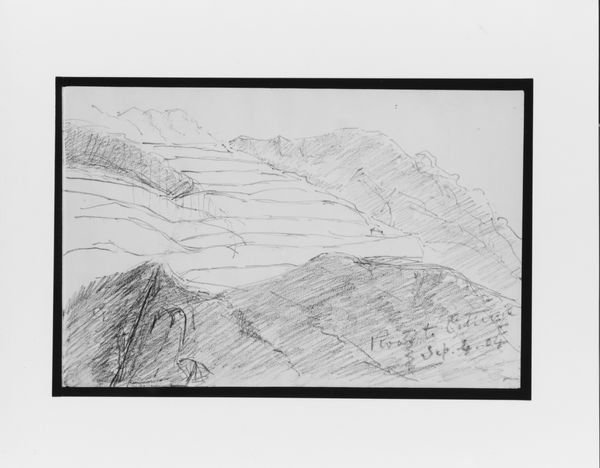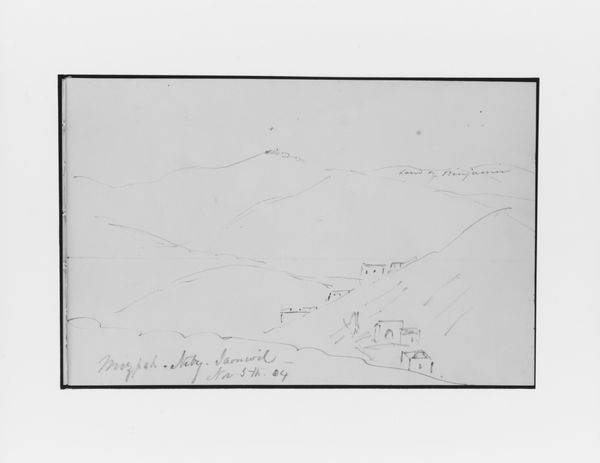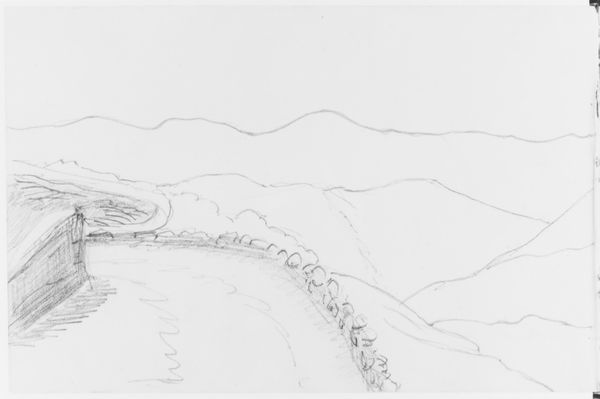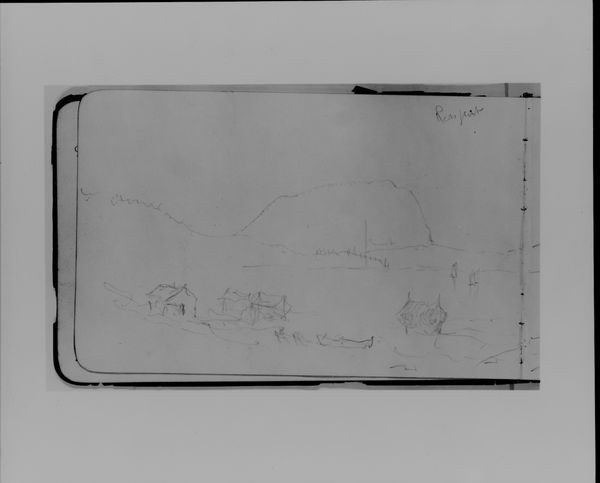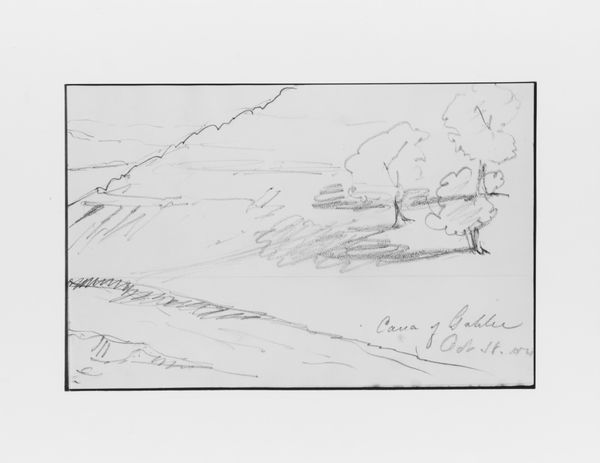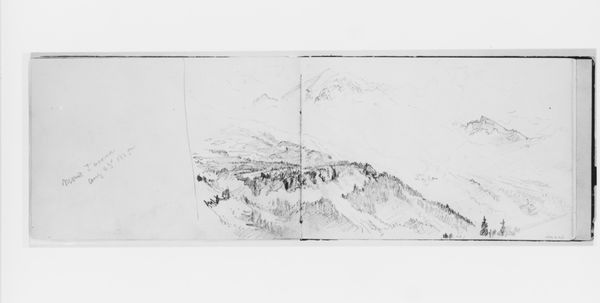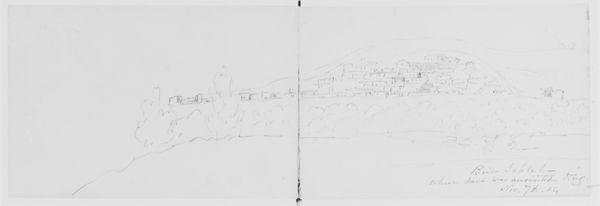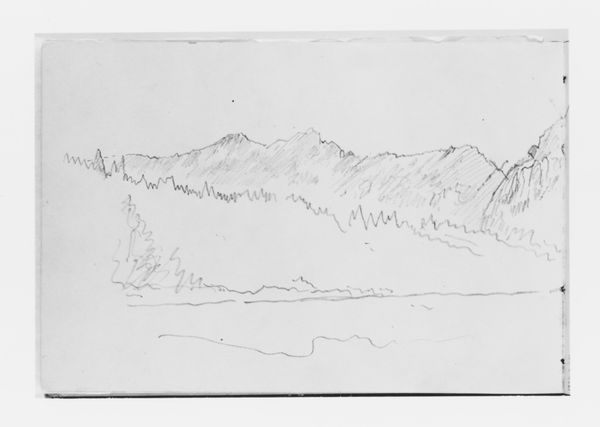
Mountains of Naphtali (?) (from Sketchbook) 1904
0:00
0:00
Dimensions: 5 1/4 x 8 1/4 in. (13.3 x 21 cm)
Copyright: Public Domain
Curator: Welcome. Today, we're looking at Mary Newbold Sargent's "Mountains of Naphtali (?)", a pencil drawing from 1904, currently held in the Metropolitan Museum of Art. Editor: It has a definite feeling of quietude. The starkness of the pencil on paper emphasizes the scene's stillness. It is delicate but definite. Curator: Indeed. This landscape is intriguing in its suggested historicity. Given Sargent's background, could the question mark in the title "Mountains of Naphtali (?)" be reflective of a pilgrimage, of identity, even of belonging or not belonging to a place and perhaps reflecting on larger colonial power structures present during the time it was made? The ambiguity resonates, offering avenues to consider the representation of landscapes through varied lenses. Editor: From a purely formal viewpoint, notice how the artist utilizes the contrast between the sketchy lines and the blank space of the paper. The town nestled within the hills becomes a focal point by its definition through bolder line work. The artist seems more interested in suggesting the landscape than defining every contour. Curator: Exactly. This suggestion leaves much open for the viewer. This artistic approach could speak to a desire to step away from concrete depictions, possibly paralleling larger shifts in how people viewed and understood their place in the world in relation to established powers and colonial expectations. It is a step outside a world that can be physically labeled, measured and possessed. Editor: It’s all suggestion here, from a structural sense. The way she composes the artwork by leaving a huge area to the sides of the mountains makes the artwork breathable, not closed. The white negative space provides that lightness of form. Curator: A beautiful articulation, and I believe this openness allows us to read beyond surface-level aesthetics into deeper cultural and socio-political commentaries that might speak to current conversations about identity, representation, and the colonial gaze in artistic expression. It makes the work relevant beyond its time. Editor: By stripping down the imagery to mere suggestion and pencil work, the work speaks volumes. Curator: Precisely. A quiet piece, capable of stirring many profound thoughts.
Comments
No comments
Be the first to comment and join the conversation on the ultimate creative platform.

